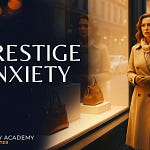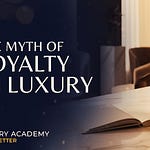Colour psychology is one of those things that sounds scientific enough to make people nod gravely while secretly wondering what on earth it actually means. Every few years someone rediscovers the idea that blue makes us creative and red makes us angry, and suddenly every brainstorming room is repainted like a Smurf convention. The problem is, it isn’t true. Those early studies were charmingly confident and almost entirely unrepeatable.
Colour doesn’t cause behaviour; it carries meaning. And those meanings aren’t universal, they’re cultural, historical, accidental. Red in Britain says danger and double-decker buses; red in China says weddings and prosperity. Same pigment, opposite emotion.
The mistake is believing the pigment does the heavy lifting. It doesn’t. Story does. Louboutin’s red soles say glamour because of everything wrapped around them, price, scarcity, audacity, not because the paint itself has mystical powers. Hermès orange began as a wartime compromise, not a branding epiphany. Tiffany blue was chosen because turquoise jewellery happened to be fashionable in the 1840s. Stick with anything long enough, tell the right story, and it becomes sacred.
That’s why consistency matters more than cleverness. The brands we think of as “owning” a colour didn’t arrive there through focus groups and mood boards; they just never flinched. Meanwhile, somewhere out there is a start-up agonising over Pantone swatches while their service barely functions.
Colour is a flag, nothing more. Fly it long enough and win a few battles under it, and people will salute it. But there’s no magic paint that makes you luxurious. If there were, Dulux would be running the luxury industry.
See you need week
Paul










